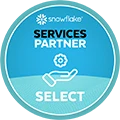
Just imagine how wonderful it is to see the processes automated in such a way, that the work would not stop once it has entered the pipeline!
Think about golden opportunities that decent automation opens up, such as higher customer service and satisfaction levels, faster throughput, fact-based decisions, enhanced communications and many more. With better service there comes the increased premium growth – and soon you see your business rapidly improved.
One may misinterpret changes as being risky managers’ whims – but, on the contrary, if you are going to survive in today’s fast-changing world, you’d better consider constant development to be rather a necessity. As a wise saying goes, when you stay at the same spot, you’re actually lagging behind. In this sense, it’s time for the unchanging insurance industry to experience profound changes by embracing the emerging technologies.
The introduction of progressive automation into the work of the insurance industry may drastically change the situation to the better, so many professionals in the insurance sector are thinking over turning to new solutions. According to Accenture, 75% of insurance executives believe that Artificial Intelligence (one of the most powerful ways of implementing automation), will provide significant industry changes in the next 3 years. In this article we will cover top 4 insurance automation ideas, and see how the insurers can benefit from them.
COMMON PROBLEMS THAT ANY AUTOMATION SOLVES
Automation is the technology by which a process is performed without human assistance. To automate insurance processes – information submission, underwriting, policy management, claims processing, policy renewals etc. eradicates the following:
- Tedious paperwork
Dealing with paperwork is a thing of the past with its time-consuming and expensive flow. Analysis of call-center data shows that employees spend 30 to 40% of their time on transaction documentation. While the technology to automate 30 to 40% of a worker’s activities already exists, carriers have yet to take full advantage of that.
- Routine repeatable tasks
Routines, such as gathering the same information from the prospects and clients, take up a sizable amount of employees’ time and focus, meanwhile taking them away from more valuable tasks. Such processes can be easily automated without any sufficient risks and quite quickly.
- Data retrieval
In the labyrinth of software, processes, applications, and systems, data often get lost or become extremely hard to retrieve. Key information is often jammed with excessive data, thus complicating swift decisioning. Automation can provide a better way of collecting, analyzing and retrieving data.
- Human-based only reasoning, analysis and decision-making
For years, decision-making has been predominantly based only on competence, knowledge and experience of a particular agent, which increases risks of influence of human factors like mood, tiredness, focus, etc. Automation could incorporate technologies that generate solutions based on statistics and analysis of the previous data, therefore improving decision-making process. This can be created in the form of digital advisors or assistants.
ELECTRONIC FORM SUBMISSION
An electronic form (or e-form) is a document with fields where one can write or select; basically, it is a computer version of a paper form. Each insurer deals with a great variety of forms, such as insurance policies, applications, claims, invoices, reports, etc. on a daily basis. Compared to paper forms, e-forms are way better for the following reasons:
- E-forms are easier to manage
Manual data entry, distribution and filing takes much time and may lead to accidental document misplacements and losses. E-forms provide automatic information formatting, calculation, and validation.
- E-forms forms are cheaper
According to the Gartner Group, a single paper form can cost an organization $30-$165 to print, process and store. Moreover, data accuracy achieved by utilizing e-forms alone saves thousands of dollars.
- E-forms save time
On average, digital forms took 40% less time to complete than their paper counterparts – data can be quickly copied across the document. Manual calculations, such as risk scoring, financial assessments can we actually can automate, and it’s simply faster to type than to write. Additionally, forms can dynamically change depending on the circumstances.
Utilizing e-forms is one of the easiest ways to bring a piece of automation into the business process, which would bring value almost immediately.
Azati developed online application forms entry for automated process of application management : initial form submission, missing information gathering process, process of decision making, and insurance quote acceptance process.
POLICY MANAGEMENT THROUGH SELF-SERVICE PORTAL
As many customers today are comfortable with serving themselves online, a reliable self-service portal is beneficial for any insurer. We couldn’t agree more with Deloitte’s report on the state of the market, that says “digital strategies that more closely engage policyholders and improve customer experience are no longer aspirations but necessities in a mobile-driven culture and economy.”
Though a self-service portal is not an automation on its own, it serves as a platform for plenty of automation features. Allowing clients to manage their insurance policies through self-service portal is a win-win action, as it improves efficiency and customer satisfaction rates, as well as reduces costs through creating an environment of empowerment.
Self-service platform commonly provides:
- 24/7, global and secure access
- full visibility and control of policy details, billing and payments, transaction history, applications and quotes, claims, relevant and time-sensitive product information
- ability to end customers to update profiles, access policy information, report claims, check the status of an open request etc.
As a positive side effect, allowing self-service reduces the time spent by employees on insurance administration. For the clients would resolve many of their issues without involving a customer service representative.
Our team developed Insurance Company self-service portal, that provides web and mobile based controlled access for the end consumers to the essential features of policy management system, billing and payments, applications and quotes, claims and Knowledge Center resources.
POLICY APPLICATION DECISION ASSISTANT FOR UNDERWRITERS
The underwriting process requires a lot of expertise, effort, and at the same time it should be reliable and quick. Until recently it was quite problematic to meet all these requirement, but, eventually, this has become a reality.
A policy application decision assistant aims at facilitating decision making for underwriters by generating recommendations to approve, decline or manually review the submitted application. Though, it is rather early to hand over the management of this process entirely to the system. It can serve as a reliable assistant and facilitator.
Such advisors (if built correctly, of course) are highly precise. Their decisions rely on the historical data consisting of the application submissions, kick-out rules, and the historical effectiveness of similar underwriting decisions for the similar applications that we have already reviewed.
We have recently developed such an assistant for one of our clients in the insurance carrier segment. As a result, the policy application assistant tool proved to be effective. For it sufficiently reduced the volume of the underwriters’ work, and allowed them to deal with more applications for the same period of time. The subsequent implementation phase resulted in full automation of underwriting for a sizable amount of new submissions.
CLAIM FRAUD DETECTION SOFTWARE
Coalition Against Insurance Fraud estimates that fraud steals $80 billion a year across all lines of insurance. Each insurance company faces fraudulent claims and have to spend its resources in order to fight the problem.
According to the statistics, nearly 75% of insurers address the problem by using insurance automation systems to detect false claims. But tech wouldn’t slow down its pace in developing. So now insurers should think over shifting to more promising tools based on Artificial Intelligence.
One of the key advantages of an AI-based fraud detection system over automated software, is that the former automatically adapts to the newest fraud schemes. Whilst the latter is confined to the predefined manually-entered settings that sooner or later become irrelevant.
Here is the simplified AI anti-fraud software working principle:
- analyzing large quantities of data (claims);
- identifying patterns across fraudulent claims;
- recognizing similar fraudulent behaviour in newly submitted claims.
By continuously repeating these phases, AI-based solutions improve over time. This way, such software is great for a long-term perspective. Moreover it is more financially beneficial in the long run. Besides, the solution brings the following bunch of benefits:
- it detects more cheating attempts than traditional tools, or human investigators
- revealing connections between multiple diverse factors, which can be imperceptible for a human eye
- the processing requires a relatively short period of time
If you’d like to know more, we welcome you to read a case study on Azati recently introducing a system of machine learning and analysis that detects fraud.
CHATBOT-BASED AGENT
A recent survey showed that nearly 72% of the respondents say they prefer to get answers to their questions online. Convenience and time have never been valued so much as today. Being able to respond in a jiffy could be the main factor that would make your company stand out from the competitors, reverse low customer satisfaction, and attract new customers. And all these issues we can cover with chatbots.
A chatbot is the software that can understand and reply to typed commands and questions within seconds. This technology is prophesied to reshape the presale and customer service, as chatbots provide new, understandable and user-friendly experience.
In the insurance sector we can use it to:
- answer policyholders’ questions
- show customers their coverage amounts, latest billing amount and other activities with their account
- alleviate the processes of filing claims or policy renewal.
THE FUTURE INSURANCE AUTOMATION
The companies that utilize automation are building the right foundation, which provides a longer-term strategic view and generates further growth. Insurance, as well as any other industry, can flourish in the digital age — if it takes look at modern technologies to move even more decisively and swiftly.

